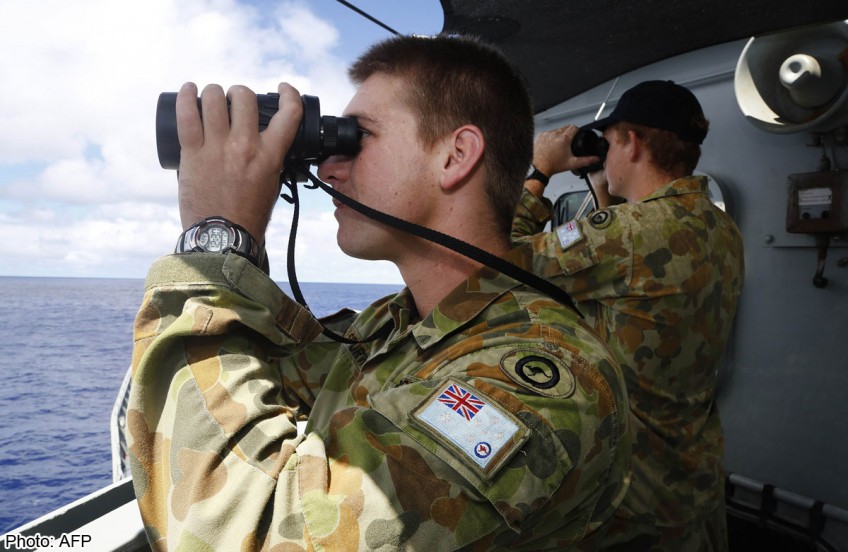Retrieving black boxes, getting data a difficult process

SYDNEY - Even if searchers of the missing Malaysia Airlines plane locate the aircraft, retrieving its black boxes will be difficult and the data may not explain the mystery of the baffling flight.
The so-called black boxes - one captures flight data and one records cockpit communication - are crucial to understanding the plane's flight path and discovering the causes of its crash.
They are typically painted orange to make detection easier and stored at the back of the aircraft because planes usually crash nose first. They are protected by a steel or titanium shell and can withstand intense heat and pressure. The data is stored for decades.
But the difficulty is finding them on the ocean floor, which can take years. The advantage for the MH370 operation is that the searchers have detected signals from the black boxes' locator beacon, which should help to lead them directly to the devices.
But retrieving the recorders will be difficult.
The ocean floor where the signals have been heard is believed to be heavily covered with silt, which may have buried the devices. And the depth is believed to be about 4,500m, the limit of the capability of an unmanned submarine that will be sent to survey and photograph the ocean floor.
If and when they are located, a robotic vehicle with arms and claws would probably be sent down to pick up the black boxes.
But accessing the data presents the next set of challenges. First, black boxes can be damaged during crashes, although this is rare.
Second, the devices can be corroded by salt water. Once found, they would be kept in clean water and dried out under controlled conditions - a process which can take about two days.
Mr David Barry, an aviation expert at Britain's Cranfield University, said capturing the data would then take "three or four days" if the black boxes are undamaged. It could take weeks if they are badly damaged.
Finally, the cockpit voice recorder captures communication on a two-hour loop and deletes all but the final two hours. Typically, it is the final moments before a crash that are important. But in the case of MH370, the crucial moments appear to have occurred hours earlier, when the plane's communications were disabled and it inexplicably turned west.
This occurred in the first 90 minutes after take-off, and the cockpit chatter will be lost unless the black box lost power at the same time the flight went awry.
Fortunately, the flight data recorder is likely to yield vital information. It records the last 25 hours of flying time, enough to cover MH370, which flew for about eight hours before ending, apparently, in the Indian Ocean.
The recorder captures information on altitude, speed, direction, acceleration as well as the autopilot function, fuel use and even the cabin seat belt signs.
The information should go some way to explaining the reasons for MH370's tragic flight.
This article was published on April 12 in The Straits Times.
Get a copy of The Straits Times or go to straitstimes.com for more stories.
[[nid:94418]]